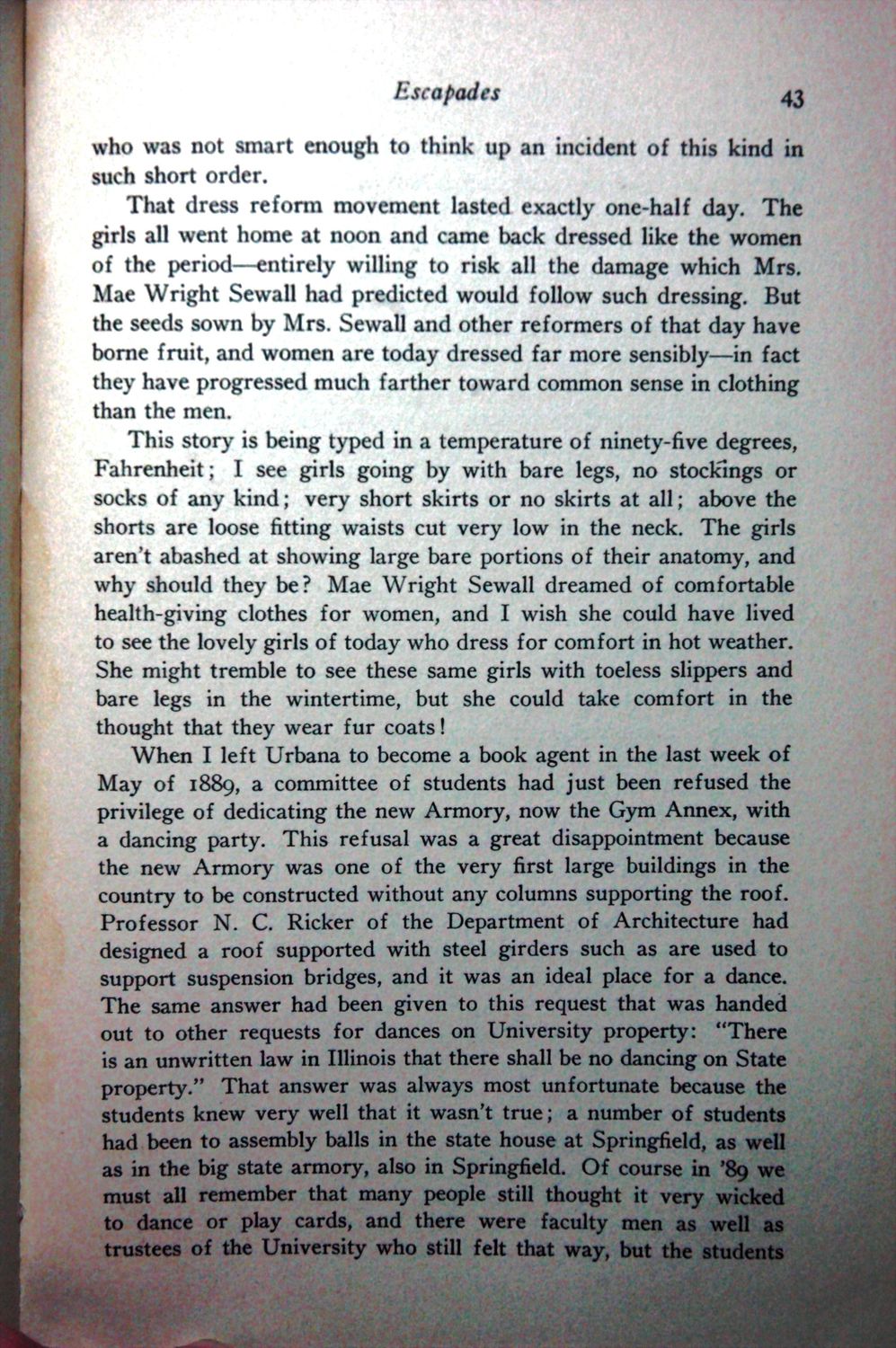| |
| |
Caption: Book - Banks of the Boneyard (Charles Kiler)
This is a reduced-resolution page image for fast online browsing.

EXTRACTED TEXT FROM PAGE:
Escapades 43 who was not smart enough to think up an incident of this kind in such short order. That dress reform movement lasted exactly one-half day. The girls all went home at noon and came back dressed like the women of the period—entirely willing to risk all the damage which Mrs. Mae Wright Sewall had predicted would follow such dressing. But the seeds sown by Mrs. Sewall and other reformers of that day have borne fruit, and women are today dressed far more sensibly—in fact they have progressed much farther toward common sense in clothing than the men. This story is being typed in a temperature of ninety-five degrees, Fahrenheit; I see girls going by with bare legs, no stockings or socks of any kind; very short skirts or no skirts at all; above the shorts are loose fitting waists cut very low in the neck. The girls aren't abashed at showing large bare portions of their anatomy, and why should they be? Mae Wright Sewall dreamed of comfortable health-giving clothes for women, and I wish she could have lived to see the lovely girls of today who dress for comfort in hot weather. She might tremble to see these same girls with toeless slippers and bare legs in the wintertime, but she could take comfort in the thought that they wear fur coats! When I left Urbana to become a book agent in the last week of May of 1889, a committee of students had just been refused the privilege of dedicating the new Armory, now the Gym Annex, with a dancing party. This refusal was a great disappointment because the new Armory was one of the very first large buildings in the country to be constructed without any columns supporting the roof. Professor N. C. Ricker of the Department of Architecture had designed a roof supported with steel girders such as are used to support suspension bridges, and it was an ideal place for a dance. The same answer had been given to this request that was handed out to other requests for dances on University property: "There is an unwritten law in Illinois that there shall be no dancing on State property/' That answer was always most unfortunate because the students knew very well that it wasn't true; a number of students had been to assembly balls in the state house at Springfield, as well as in the big state armory, also in Springfield. Of course in '89 we must all remember that many people still thought it very wicked to dance or play cards, and there were faculty men as well as trustees of the University who still felt that way, but the students
| |